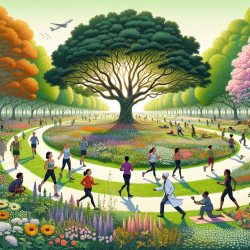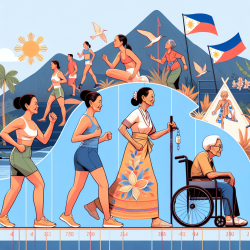Introduction
The COVID-19 pandemic has reshaped our understanding of health determinants, highlighting the crucial role of environmental factors. A recent study titled Greenspace exposure and COVID-19 mortality in the United States: January–July 2020 explores the potential protective effects of greenspaces against COVID-19 mortality. This blog delves into the study's findings and discusses how practitioners can leverage these insights to enhance health outcomes.
The Study at a Glance
Conducted across 3049 counties in the contiguous United States, the study utilized Leaf Area Index (LAI) as a measure of greenspace exposure. The researchers found a significant dose-response relationship between higher greenspace levels and reduced COVID-19 mortality rates. Specifically, counties with higher LAI deciles demonstrated lower mortality rates, suggesting that greenspaces may play a protective role against the virus.
Key Findings
- Counties in the top three LAI deciles (8-10) showed a marked reduction in COVID-19 mortality, with mortality risk ratios (MRR) of 0.82, 0.78, and 0.59, respectively.
- Increased greenspace exposure is associated with enhanced immune function and reduced air pollution, which may contribute to lower mortality rates.
- Socio-economic factors, such as Medicaid prevalence, were also linked to COVID-19 outcomes, highlighting the complex interplay between environment and health.
Implications for Practitioners
For practitioners, these findings underscore the importance of integrating environmental considerations into health strategies. Here are some actionable steps:
- Promote Outdoor Activities: Encourage children and families to spend more time in natural settings to boost immune function and overall well-being.
- Advocate for Greenspace Development: Work with local governments to increase greenspace availability, especially in underserved communities.
- Incorporate Nature in Therapy: Utilize nature-based interventions in therapy sessions to enhance mental and physical health outcomes.
Encouraging Further Research
While the study provides compelling evidence, it also opens avenues for further research. Practitioners and researchers should explore:
- The long-term health impacts of greenspace exposure on various populations.
- How different types of greenspaces (e.g., parks, forests) uniquely affect health outcomes.
- The role of socio-economic factors in moderating the benefits of greenspace exposure.
Conclusion
The intersection of environmental health and public health is more relevant than ever. By understanding and harnessing the benefits of greenspaces, practitioners can contribute to healthier, more resilient communities. To read the original research paper, please follow this link: Greenspace exposure and COVID-19 mortality in the United States: January–July 2020.










